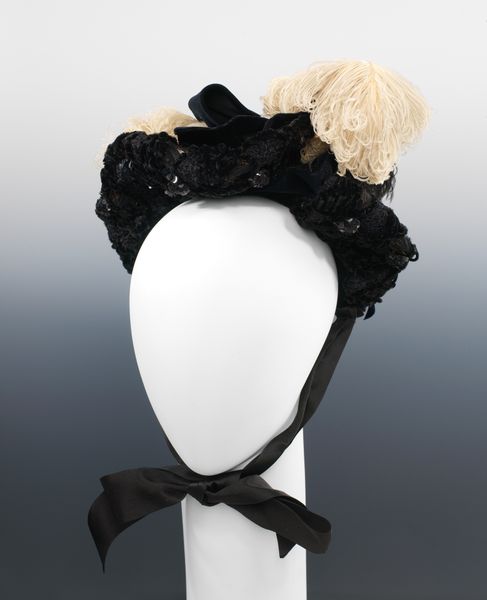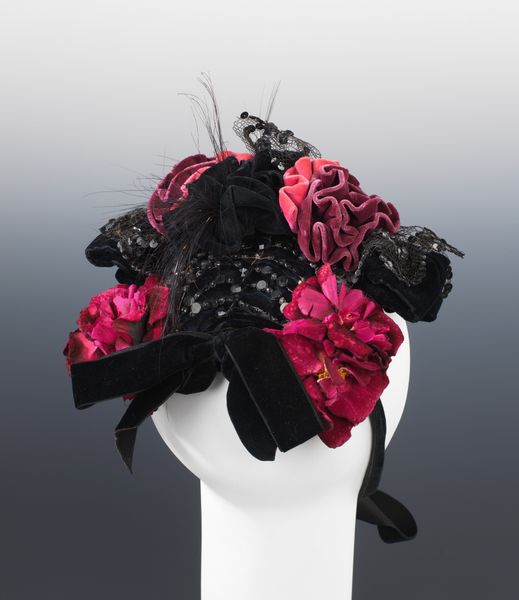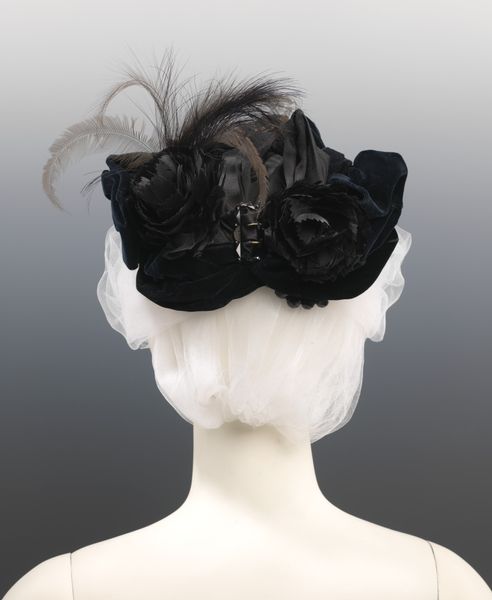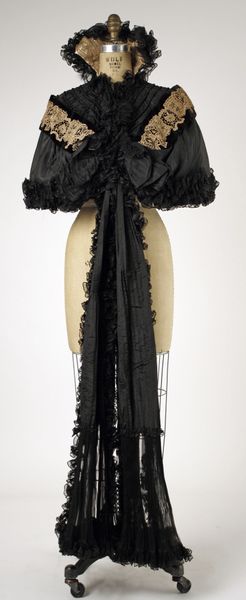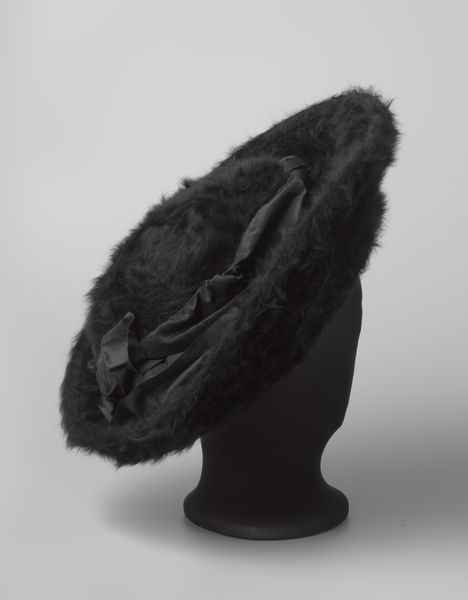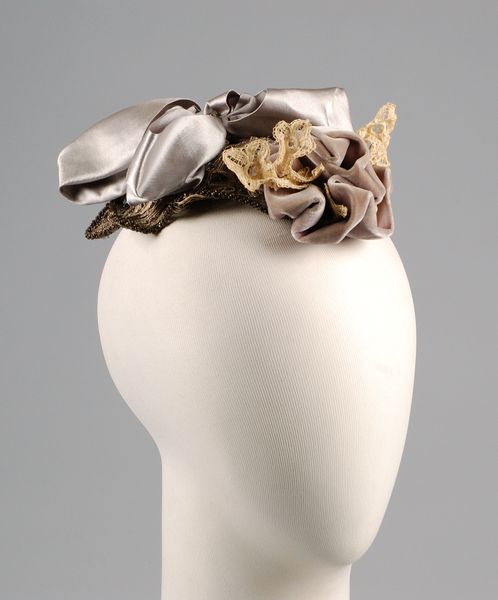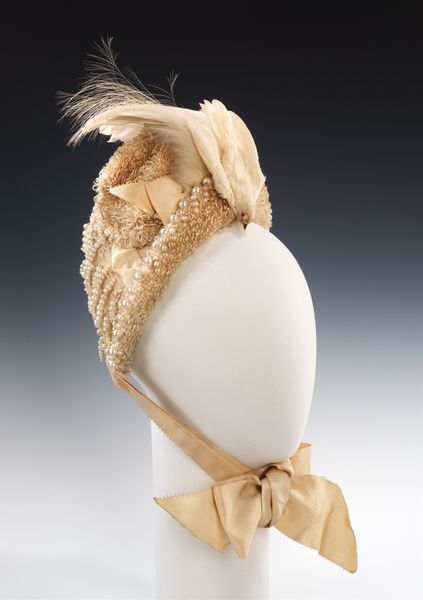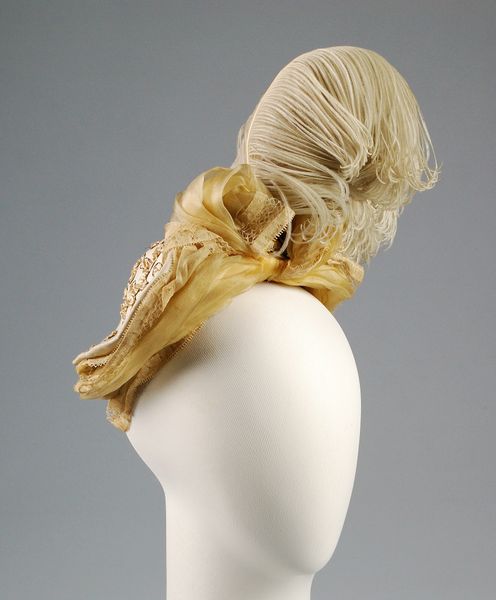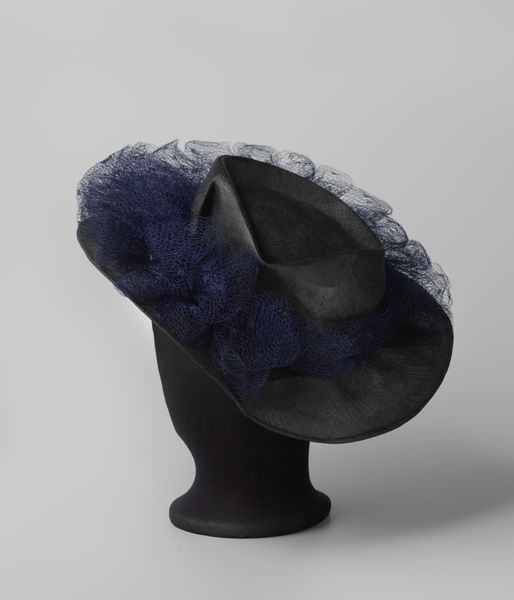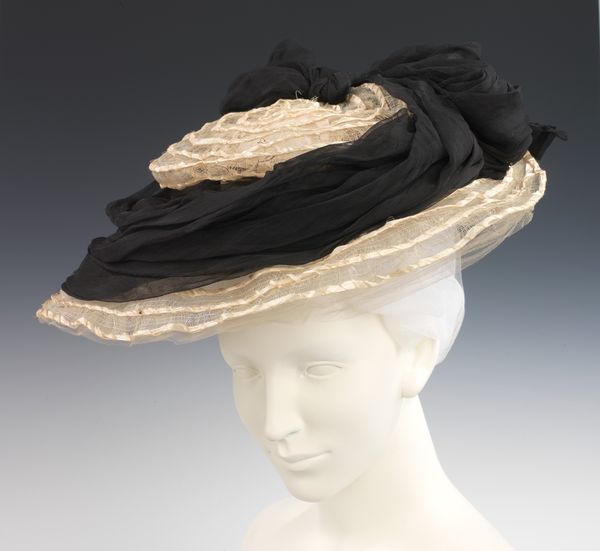
mixed-media, fibre-art, textile
#
mixed-media
#
fibre-art
#
textile
#
costume
#
decorative-art
Copyright: Public Domain
Curator: Looking at this confection of black fabric, I’m immediately transported. It's intensely velvety and almost gothic. There's something about the deep, dark, delicious tones and soft textures that hints at clandestine assignations! Editor: Indeed. What you're seeing is an Evening Bonnet, created somewhere between 1890 and 1894. You can find it here at The Met. It's primarily textile and fibre art, showcasing that late 19th century flair for dramatic accessories. Curator: Accessory feels far too mild! This bonnet feels like a character in a play! The large floral element feels a bit decadent; the dark velvet petals contrast with a coarser woven base. The ribbons seem less to secure than to entice a closer look at the nape of the neck…! Editor: The late 19th century was an interesting period for social expression through fashion, and mourning became almost fetishized in public life, especially after the death of Prince Albert. Queen Victoria modeled the sophisticated sorrow everyone else scrambled to replicate! What better way than in wearable and wildly elaborate garments? Curator: Ah, the Victorian era and its controlled exterior masking all that…everything! The materials used speak volumes too. Velvet for richness, woven fibre for grounding. This headpiece embodies constraint AND exuberance. Imagine the personality needed to carry this off! A secret poetess, perhaps, or a stage actress escaping into shadows? Editor: Bonnets such as this one often served a purpose beyond mere decoration. They demarcated social status, reflecting women's positions and sometimes aspirations within a structured society. Also, the use of mixed media within the costume marks a democratization of materials – mixing luxe textiles with more common materials like simple weave. Curator: Democratization by way of delicious gloom! But yes, it also reflects a broadening of taste, wouldn't you agree? Even, perhaps, a subtle rebellion against rigid high society dictates? Editor: I do. And speaking of broadened tastes, these designs opened employment for legions of women—professional milliners, textile artists, seamstresses—fashion became a field to infiltrate, beyond being merely something dictated from above. Curator: So this bonnet really is a potent little time capsule, encapsulating both mourning and the dawn of something fresh. Who knew fashion could hold so much history? Editor: And on such a small head! This Evening Bonnet tells tales not just of what women wore but how they carved a space for themselves, stitch by shadowed stitch.
Comments
No comments
Be the first to comment and join the conversation on the ultimate creative platform.
